Sword. Scotsman's national weapon
Fatherland glory and valor edge.
By the white light we drive fate,
Forever I will remain your son!
Robert Burns. In the mountains my heart
Weapon from museums. To begin with, the article "The main weapon of the cuirassier" aroused great interest of the readers of "VO", and they, naturally, immediately asked me to continue this topic. And it is not easy to continue it, since the only broadsword available to me personally was kept behind the glass of the showcase of the Penza Regional Museum of Local Lore, and I personally could judge all the others only by their photographs and brief (very!) Descriptions on the websites of several museums. However, patience and work will grind everything, so in the end I managed to hold this sword and get acquainted with unique specimens of broadswords from the Museum of Lower Parks in Hamilton, which is located in the Scottish county of South Lanarkshire. The museum is very interesting, although not very large. The bulk of the exhibits presented in the museum are the collection of the former Cameron (Scottish Riflemen) regiment of the British army. The regiment was formed on May 14, 1689 and named after Richard Cameron, Lion of the Covenant, Scottish preacher who died at the Battle of Aires Moss in 1680. And today we will tell our story about some of the weapons displayed in it, as well as about broadswords in general.
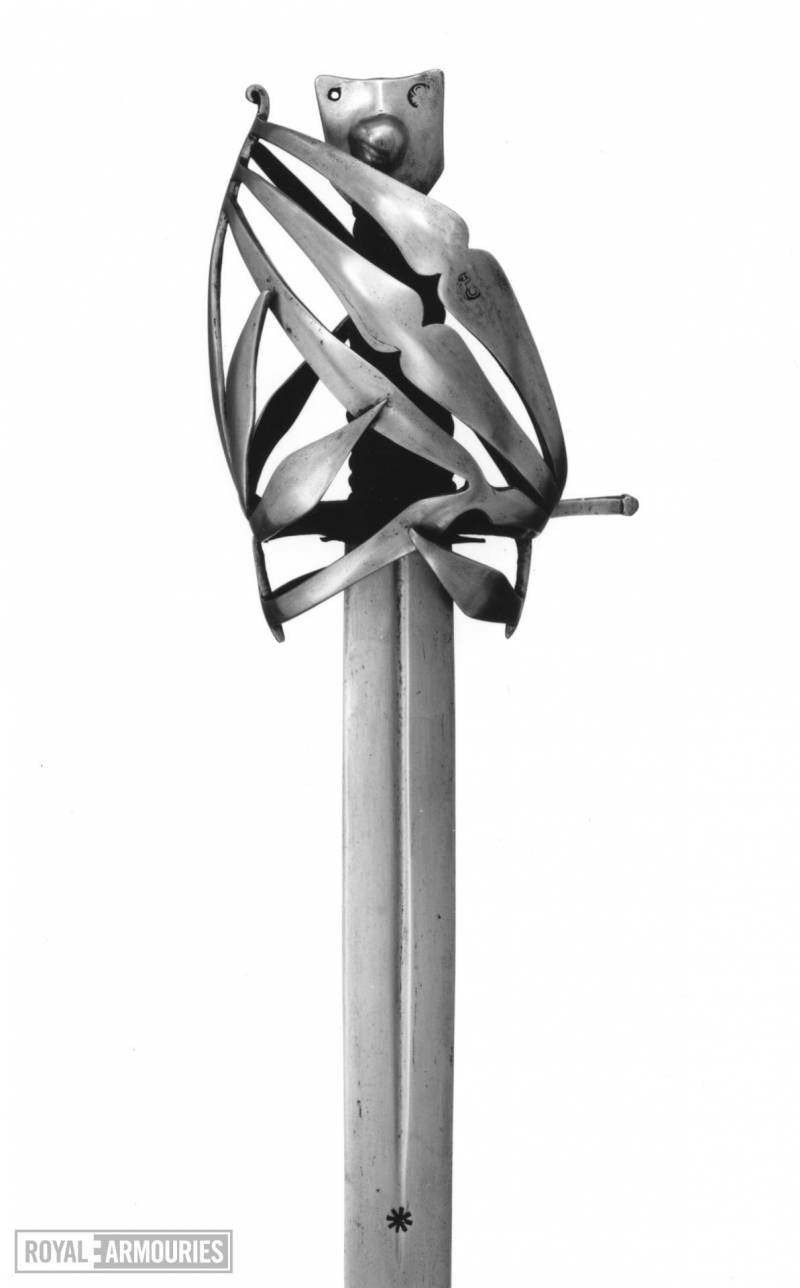
Schiavona. 1680-1720 Top "cat's head" with an unidentified mark, oval basket-handle with a ring for the thumb. The basket itself is made up of an intricate series of flat stripes that emerge from a common root at the base of the handle and span the arm diagonally. The unidentified stamp was applied to the handle three times. Straight double-edged blade with a short fuller and an unknown brand in the form of a "rosette" at the end of the fuller. Overall length: 1062 mm. Total weight: 1134 g Blade length: 914 mm. Royal Arsenal, Leeds
Let us first turn to stories appearance. Let's start with the Schiavona, an Italian broadsword with a basket handle. Her ancestor was the swords of the Doge's Guard, with which she armed herself in the XNUMXth century. It is believed that they got their name because of their crosshair in the shape of the letter "S". Another feature of them was the tops in the shape of a square with corners slightly elongated to the sides. There are a lot of such swords in the collection of the Arsenal of the Doge's Palace in Venice, and looking at them, you understand where such tops came from on the Schiavons.
The Italians also produced swords with very twisted guards. And then it occurred to someone to combine the sword blades of the Doge's Guard with the twisted guards of the swords of the Venetian nobleman. And it may very well be that this is how the Schiavon broadsword was born. The fact that the word "Schiavona" is translated as "Slavic" in fact means absolutely nothing, because none of the Slavic peoples in 1570, when they began to arm the horsemen of the German imperial cavalry with such broadswords, simply did not possess them. Later, all other swords with a basket handle in the Venetian style began to be called so. Under Ferdinand II, a Schiavona about 90 cm long began to arm German cuirassiers.
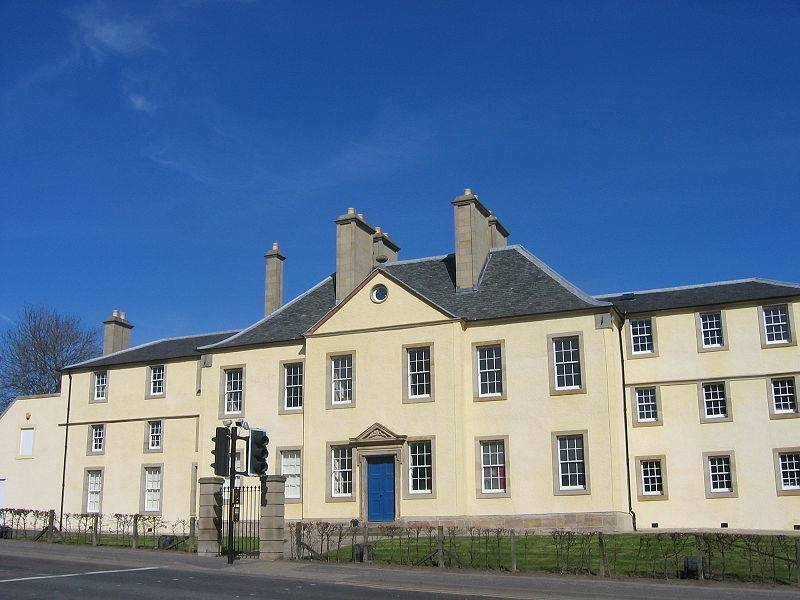
Lower Parks Museum building in Hamilton
At the beginning of the next century, this broadsword came to England, where it was widely used during the Civil War, and then also to Scotland and Ireland. But in Scotland, the shape of its guard began to differ significantly from the Venetian samples. So, it became more round, in comparison with the guard at Schiavona, and the pommel of the square became spherical, in the form of a flattened ball. The arcs cover the hand almost entirely, and, of course, one cannot fail to notice the lining made of red leather or velvet fabric. The width of the blade is about four centimeters, the length is 80. The blades had one blade, but double-edged blades for Scottish broadswords are still the most characteristic.
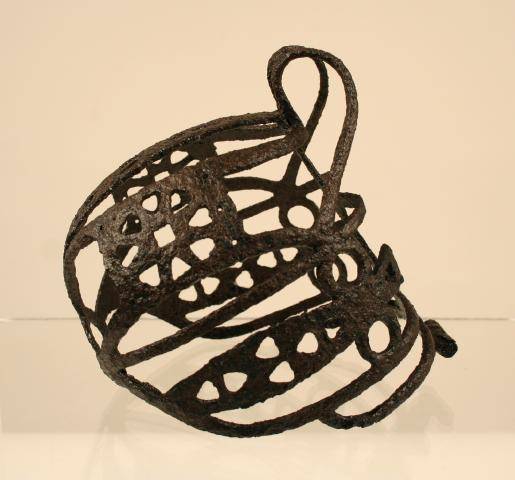
A handle basket without a blade, found on the thatched roof of the Drumlogg cottage in January 1928. As you can see, the shape of its arms is complex and whimsical, and speaks of a considerable imagination of the one who made this "basket". Lower Parks Museum in Hamilton, South Lanarkshire Council
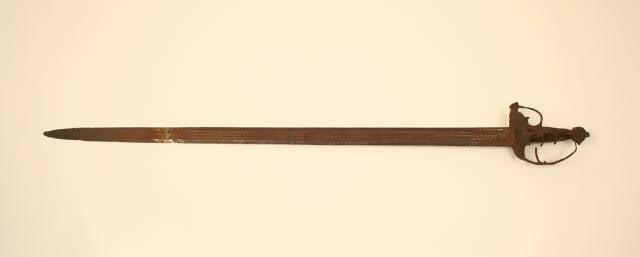
A broadsword of the "dead sword" type with a "funeral handle". The blade with a double-edged blade has two wide lobes and along the edges of the ricasso with a triple lobe extending in the center of the blade from the ricasso within 12 cm. Both edges of the blade are strongly serrated, and the point is worn and rounded. The handle is in poor condition, parts of the guard are missing, especially on the right side. The wooden handle above the shank is still present. This sword dates from the mid-1600th century (1649s) and is one of two swords brought from Craig's farm (near Sandford). The farm was transferred to William Cochran in XNUMX and was previously owned by Sir Robert Hamilton of Silvertonhill. The broadsword may have belonged to a member of the Cochran family and is typical of the style used by both government and Covenant forces in the mid to late XNUMXth century. Lower Parks Museum in Hamilton, South Lanarkshire Council
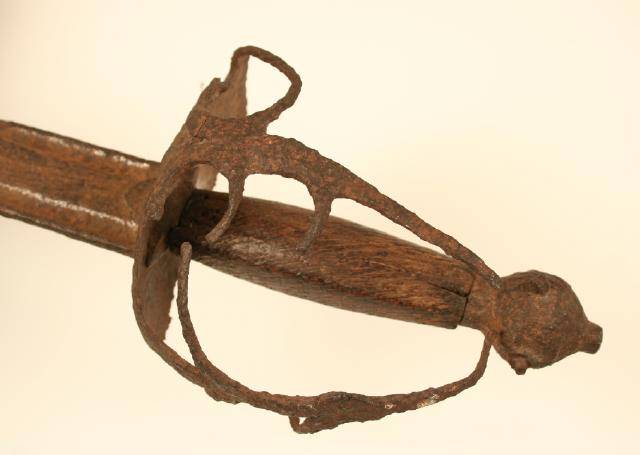
And this is his handle in close-up!
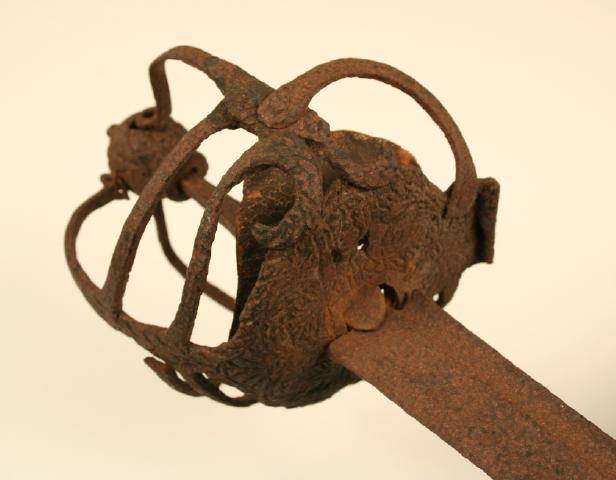
Another broadsword with a "funeral handle". The blade is single-edged, with a double-edged end to the point (one and a half sharpening). Both the blade and the hilt are severely corroded, but traces of chiseled parts are still visible on the hilt. The edge of the blade is serrated in several places, the tip is worn and rounded. This sword also comes from Craig Farm, near Sandford. Lower Parks Museum in Hamilton, South Lanarkshire Council
As it was reported in the previous material, in England "dead swords" became fashionable, that is, broadswords, named because of the human head depicted on their guard, allegedly the head of Charles I, which, however, is not confirmed by anything. But if in England the broadsword became a weapon of heavy cavalry, as it happened everywhere, then in Scotland in the 192th century, firstly, it supplanted the national sword - claymore, and secondly, it became a weapon of the wealthiest strata of the Scottish highlanders. That is, a very, very status weapon, not only for horsemen, but first of all for infantrymen! So, after the Battle of Culloden, government troops captured only 1000 broadswords as trophies, and this despite the fact that more than XNUMX Scots were killed there. Well, over time, it was a broadsword with a basket handle that became a status weapon of officers, non-commissioned officers and pipers of the Scottish regiments. Moreover, it was used by them even during the First World War.
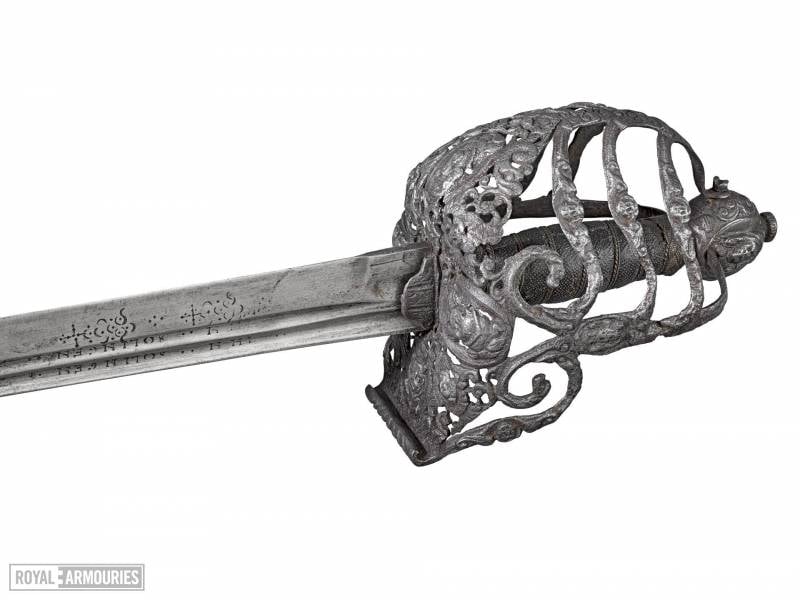
"The Deceased Sword", dated 1631-1670, by Andrea Ferrer. Overall length: 102,2 cm. Blade length: 85,8 cm. Weight: 1219 g. Royal Arsenal, Leeds

A broadsword with a blade by Andrea Ferrer (length 106,5 cm) is a typical Scottish broadsword with a basket-shaped handle. The blade has two short symmetrical ricasso valleys, above which is another short, shallow fuller. Along the valley is written the name "Andrea" on one side of the blade and "Ferrer" on the other. These names are marked with stars and curved lines on either side. Handle in the form of a basket with patterns in the form of circles and arrows. On the top of the guard, at the base of the blade, there are letters RC inside a heart-shaped recess. The handle is wooden, under the guard is a disc of thin leather. This sword is reputedly worn by Baronet Crawford at the Battle of Drumlogg on June 1, 1679. Rauford was killed in the battle, and his sword was picked up by a member of the Fleming family who lived nearby. It was then passed on through marriage to the Bryson family of Lochgate. It was owned by William Bryson when he served as special constable after the Strathhaven uprising of 1821, using a baton instead. The grip is apparently not original to this blade, as its style is more associated with the mid to late 1700s than the late 1600s. Ephesus is also marked with the letter RC inside the heart. This mark is attributed to Robert Craig of Glasgow, who was a Freeman of the Hammerman Corporation in 1721. Lower Parks Museum in Hamilton, South Lanarkshire Council
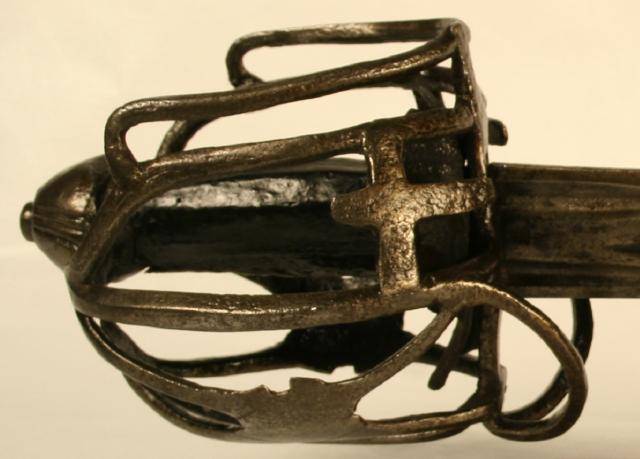
Another basket handle. Lower Parks Museum in Hamilton, South Lanarkshire Council
Since the industry in Scotland was not very good at that time, the blades for Scottish broadswords were often altered from the outdated or already out of order two-handed claymore swords of the 92,3th-1680th centuries. Blades of high quality came from Europe (and mainly from Italy or from Germany), but Scottish armourers made a specific shape of a basket-like guard locally. For example, in Glasgow and Stirling, where there are even several varieties of similar guards, noticeably different from each other. The most famous among the manufacturers of blades for Scottish broadswords is considered to be the Italian master Andrea Ferrera, whose name has become synonymous with their high quality. In the Lower Parks Museum in Hamilton, there is a typical broadsword blade of the famous manufacturer Andrea Ferrera (although it is quite rusty). It is double-edged, XNUMX cm long, with a central lobe on both sides, with two shorter lobes at the shank. The inscription "Andrea Ferera" is engraved on both sides of the blade with semicircular patterns, crosses and dots. It is the broadsword blade of Henry Hall, a famous Covenant * who died in South Queensferry in XNUMX.

Broadsword of 1863. Lining in the "basket" made of red felt, red tassel on the top. Ephesus can be removed to be replaced with another. Weight 1,38 kg. Blade length: 80,0 cm. Belonged to an officer from the Queen's Cameron Highlanders regiment. Steel scabbard. Lower Parks Museum in Hamilton, South Lanarkshire Council

His blade
From the beginning of the XNUMXth century to the present, it is the highland broadsword that has been the ceremonial weapon of the officers of the Scottish regiments of the British Army and the armies of the British Commonwealth of Nations. And two swords are also an integral attribute of the Scottish Sword Dance!

Modern replica of a Scottish broadsword that can be bought today like everything else!
In general, this traditional sword of the highlanders has sowed fear in the hearts of the British for centuries. Its long, double-edged blade and distinctive basket handle, combined with shield and dagger, has proven to be more than a suitable hitting option for enemy soldiers on battlefields around the world.
PS For comparison, consider this broadsword, ours, Russian, of Catherine's times, with a characteristic monogram on the guard, from the exposition of the Penza Museum of Local Lore. There are many differences, and they are fundamental. The blade is single-edged, the crosshair is simple, with a "wing", but a massive convex blind cup-guard is attached to it for the back of the hand. That is, from this side to the hand, neither the bayonet nor the edge of the enemy's blade will simply break through.
The bow of the guard is straight, like that of Polish sabers, the pommel is in the form of an animal head. But an interesting detail is visible on the handle: a massive thumb ring. So the grip of this sword is very strong, and the thumb is also protected from a blow from the left.
The broadsword could not be weighed, but it did not seem heavy to me, especially the blade. His grip felt heavier. Obviously, hitting the face with such a "cup" was simply stunning!
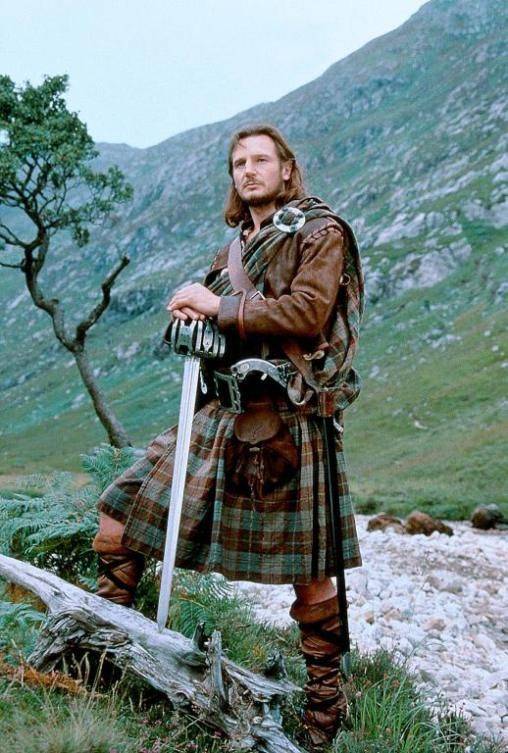
Actor Liam Neeson in a kilt and a broadsword in the movie "Rob Roy", well, a typical Scotsman!
PSS Personal thanks to Mike Tylor of the Lower Parks Museum in Hamilton for his kind permission to use the museum's photographs and related information.
* The Covenanters are supporters of the 1638 National Covenant, a manifesto of the Scottish national movement for the Presbyterian Church.
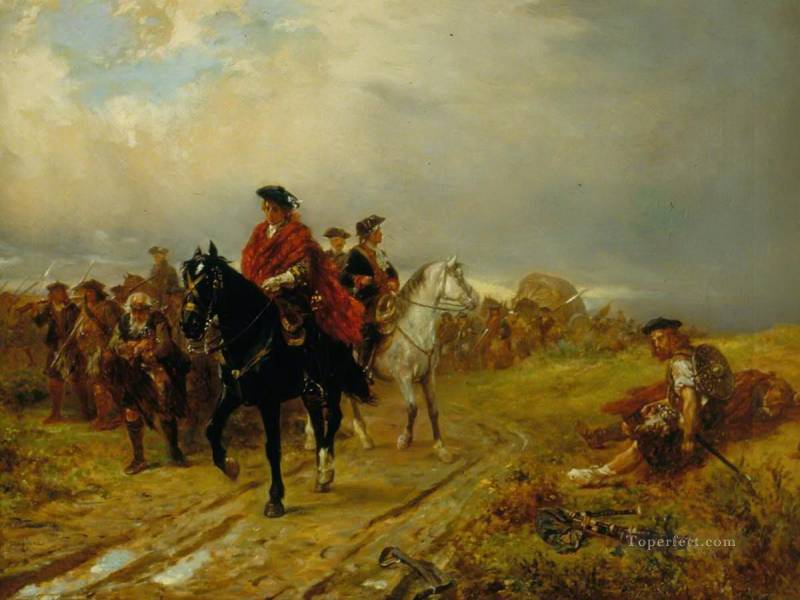
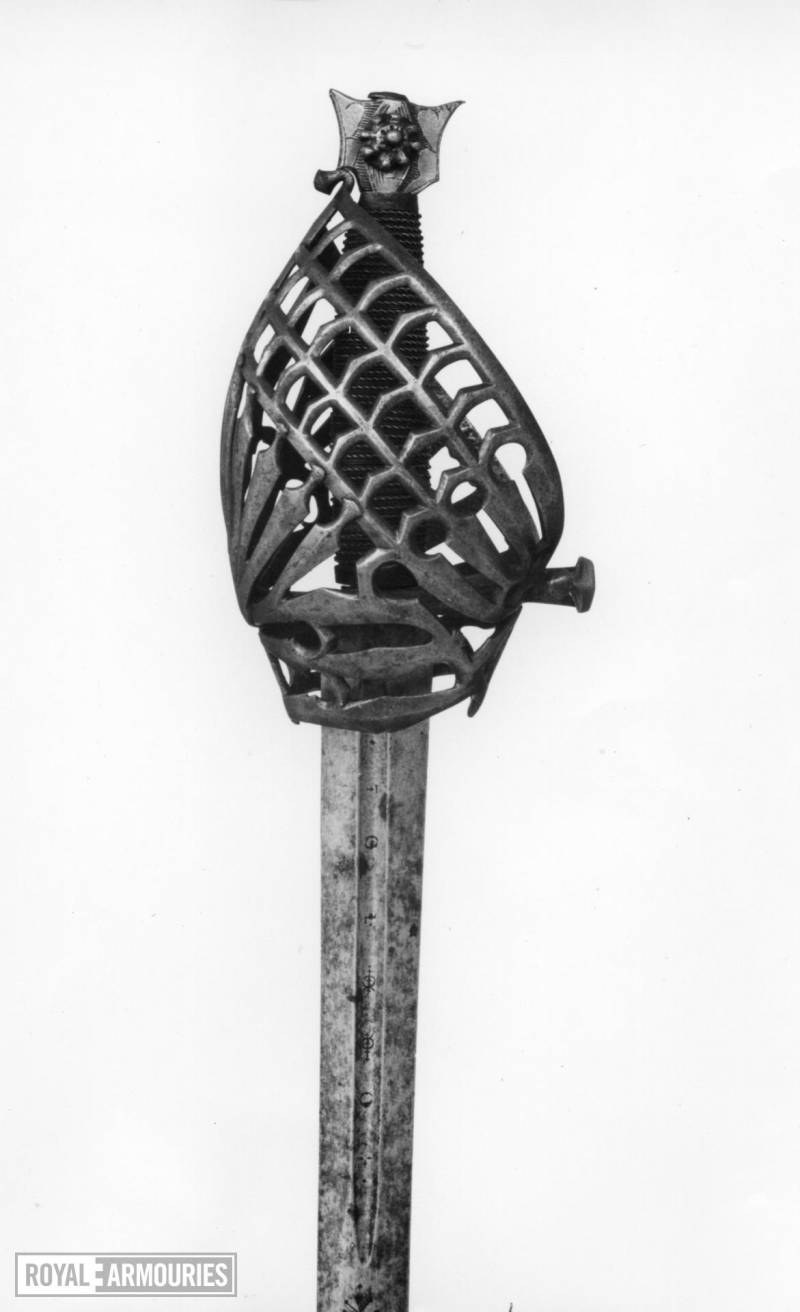
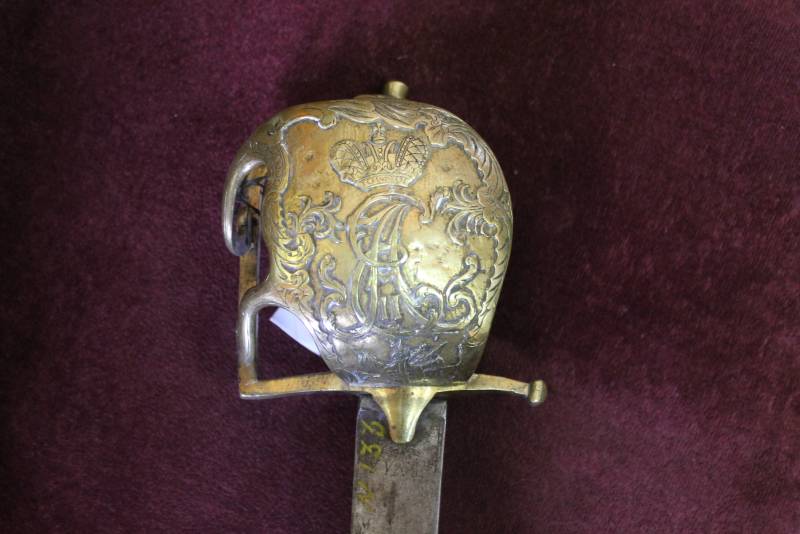
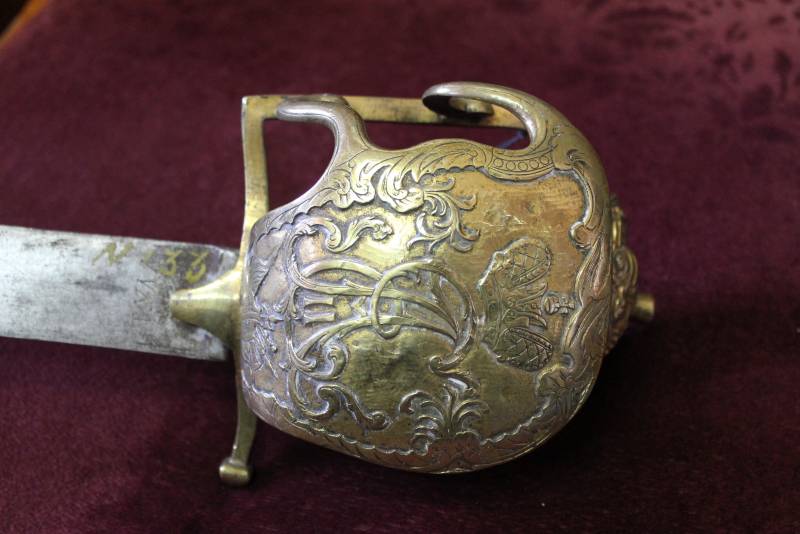
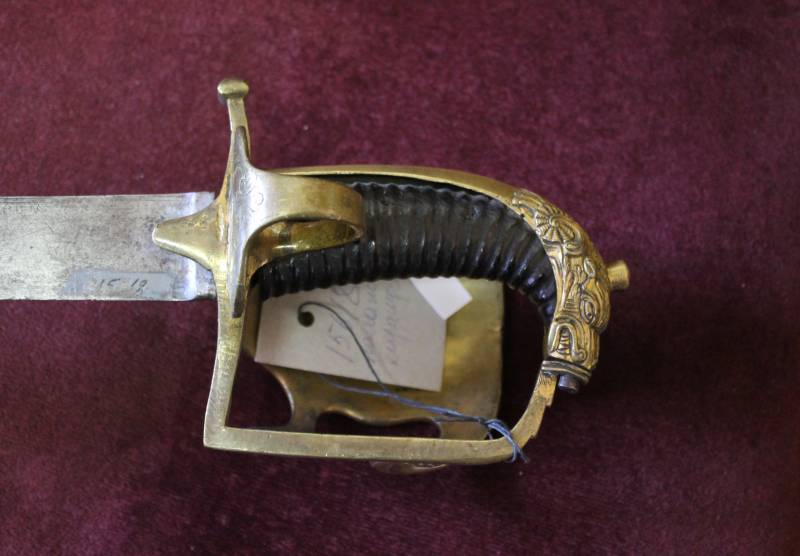
Information